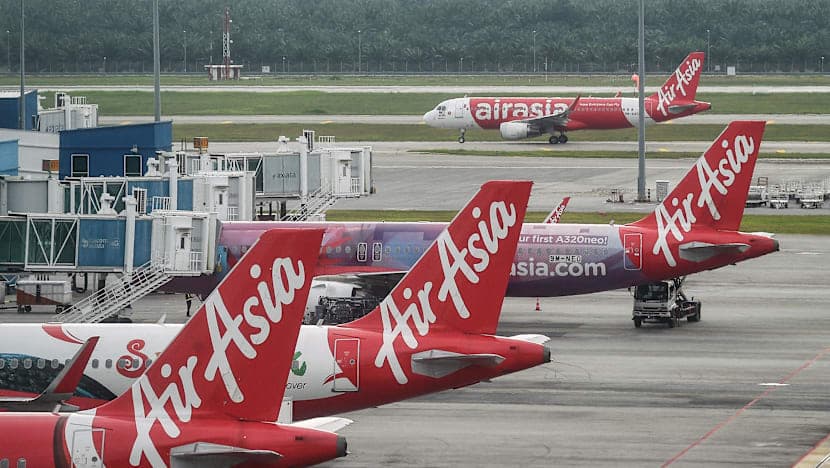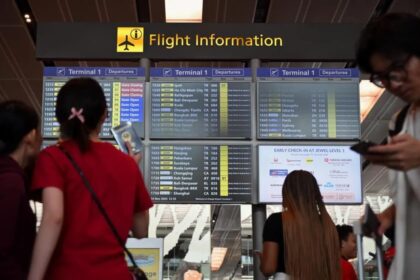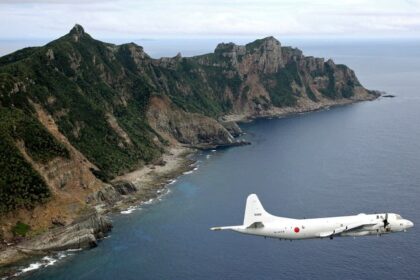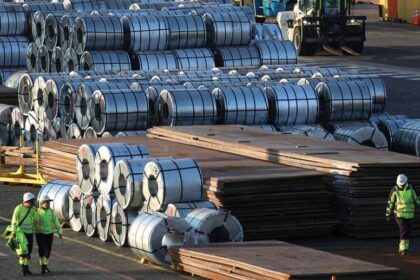How KLIA rose to the top of low cost connectivity
Kuala Lumpur International Airport has been named the most connected low cost carrier megahub for the second successive year by Official Aviation Guide (OAG). The ranking reflects the sheer number of feasible connections passengers can make on low cost airlines through KLIA within a set time window. The airport recorded 16,502 low cost carrier connections across 151 destinations and, on OAG’s overall connectivity index, it sits in joint fourth place globally alongside Frankfurt. Much of that clout comes from the AirAsia network. The group accounts for an estimated 36 percent of flights at KLIA, operating more than 4,500 weekly services from Terminal 2 to over 100 destinations across Asia and beyond.
- How KLIA rose to the top of low cost connectivity
- The AirAsia effect and a dense ASEAN network
- Weak links that hold the hub back
- A plan to connect the terminals airside
- On time performance and processing speed
- How KLIA stacks up against regional giants
- Cargo and the Aeropolis vision
- What it will take to turn connectivity into quality
- The Bottom Line
Connectivity is KLIA’s strong suit within Southeast Asia. The airport serves 70 airlines, has regained traffic beyond pre pandemic levels, and continues to add routes that deepen its reach in the ASEAN region where short regional hops dominate. For travelers, the benefit is obvious, a wide menu of budget flights that can be stitched together into viable itineraries, often at a price and frequency advantage.
That success has arrived alongside persistent frustrations. The airport’s split terminal layout creates friction for passengers who must clear immigration and security again when connecting between Terminal 1 and Terminal 2. Equipment failures, including a long outage of the aerotrain that links the main terminal and the international satellite pier, have dented the experience. KLIA’s on time performance remains mixed, and its position in global customer surveys has slipped. In the 2025 Skytrax World Airport Awards, KLIA ranked 65th, far behind regional rivals Singapore Changi in first place, Jakarta at 25th, and Bangkok Suvarnabhumi at 39th.
The AirAsia effect and a dense ASEAN network
AirAsia’s scale underpins KLIA’s rise. Terminal 2 is a dedicated low cost facility and the airline group uses it to knit together dense point to point flying into practical connections over Kuala Lumpur. The weekly schedule spans hundreds of daily flights across Malaysia, Thailand, Indonesia, the Philippines, Vietnam, India, China and more. That density gives passengers multiple daily choices and short connection windows for many city pairs.
Why connections matter for travelers
Low cost carriers traditionally sell point to point trips. Without the familiar interline and through check services of full service airlines, passengers historically had to collect bags and recheck for the next flight, which adds risk and time. KLIA has become a place where low cost travel can function more like a network, with high frequencies and timed banks that make self connecting viable. AirAsia’s own connection products further reduce friction for passengers who want one booking across two or more legs. The result is a hub that can link secondary cities at a price many travelers prefer to pay.
Fares and fees give KLIA a price edge
Airports compete on more than runways. Charges and taxes affect ticket prices, and KLIA’s passenger fees are lower than those at some rival hubs. That cost base, combined with a large, efficient fleet of single aisle aircraft and short sector lengths across ASEAN, helps airlines sustain frequent, lower fare schedules. The appeal is evident among cost conscious travelers choosing Kuala Lumpur as their transfer point between South Asia, Southeast Asia and select Northeast Asia markets.
Weak links that hold the hub back
Despite its connectivity profile, KLIA faces stubborn operational gaps. Passengers frequently complain about long queues at peak times, limited seating at some gates, poor wayfinding in parts of the complex, and inconsistent cleanliness. That perception aligns with the drop in customer awards rankings. The biggest structural issue is the split terminal system. Terminals 1 and 2 are not connected on the airside, which means passengers transferring between them must exit, clear immigration and security again, and risk missing flights if inbound services are late. This is a stark contrast to Singapore Changi, where all terminals are linked airside and transit is seamless.
A broken aerotrain and a long wait
The airport’s internal aerotrain, which shuttles passengers between the main terminal and the satellite building used for most international flights, suffered a high profile breakdown in early 2023 that stranded travelers. KLIA suspended the service and relied on buses, slowing connections for many international passengers. Airport management has slated the upgraded aerotrain for a restart on July 1, 2025. The new system includes trains with larger capacity, up to 270 passengers per set, and a redesigned control and maintenance regime. The project, procured for about RM456 million, involves partners with rail expertise and aims to deliver more reliable service after a 2.5 year hiatus.
Two terminals, one airport, twice the hassle
The lack of an airside link between Terminal 1 and Terminal 2 is the clearest constraint on KLIA’s hub potential. Airlines that want to interline full service and low cost networks cannot do so without forcing passengers to enter Malaysia and re screen. Baggage cannot be transferred within the secure area, which adds time and cost to any potential partnership. This design choice limits the airport’s ability to recreate the smooth transfers found at competitors such as Changi and Doha, where terminals function as a single secure zone.
A plan to connect the terminals airside
Airport operator Malaysia Airports Holdings Berhad (MAHB), working with the Ministry of Transport (MoT), has developed a proof of concept that would move passengers between terminals on the airside using dedicated coaches. The plan aims to allow an arriving passenger at Terminal 2 to connect to a departing flight at Terminal 1, or vice versa, without clearing immigration again. Executives and consultants who back the plan say it would reduce missed connections, improve the traveler experience, and give the airport more flexibility to balance capacity between terminals, especially as parking space near Terminal 1 becomes tight while Terminal 2 has room to spare.
The challenge sits in the details. Integrating baggage systems and processes across two terminals built for different airline models is complicated. Aligning incentives between Malaysia Airlines under Malaysia Aviation Group and AirAsia requires careful design of who bears costs and who receives benefits. These are solvable problems, but they require policy support and close coordination to run coaches airside, secure baggage transfers, and standardize procedures across multiple stakeholders.
AirAsia argued for years that the operator should fix basic problems at Terminal 2 before any grand integration plan. In 2019, Riad Asmat, then CEO of AirAsia Malaysia, urged MAHB to pause capital intensive proposals and to focus on practical improvements at klia2.
Riad Asmat, AirAsia Malaysia CEO at the time, said the operator should put the terminal integration idea on hold and spend to raise Terminal 2 to the standards of Terminal 1, fix uneven aprons and taxiways, add more guest friendly spaces, and redesign boarding gates.
On long term strategy, AirAsia X Malaysia chief Benyamin Ismail has described the group’s ambition to make Kuala Lumpur a leading low cost hub for long haul and short haul connections. He questioned spending passenger money on concepts that do not deliver clear value.
Benyamin Ismail, CEO of AirAsia X Malaysia, said the airline’s vision is to build a low cost hub that connects long haul travelers from places like Australia, China, India, South Korea and Japan into ASEAN’s largest short haul network, and that there is no point spending budget travelers’ money on a concept that does not make sense.
On time performance and processing speed
Reliability is the backbone of any hub. In August 2025, only Malaysia Airlines met the 85 percent target for on time departures at KLIA. Other carriers, including AirAsia, Batik Air and Firefly, fell short. A single late aircraft can disrupt dozens of connections in a banked schedule, so improving departure punctuality is as crucial as adding new routes.
KLIA has invested in faster processing at the border and at check in. Immigration lanes have been reorganized, more eGates are in service, and new biometric self service kiosks are in place for select airlines and passport holders. These changes have shaved minutes off peak time queues and helped some operators lift their on time performance.
Behind the scenes, the airport has overhauled its digital backbone as part of a wider Airports 4.0 program. A high capacity fiber network designed to carry critical systems separately and securely now supports real time operations across terminals. The upgrade replaced manual, failure prone network configurations with automated controls and greater redundancy. That means better uptime for everything from passenger information displays and security cameras to retail point of sale systems and airline operations rooms. Faster, more reliable networks also allow the airport to deploy new digital tools quickly, from smart video analytics to predictive maintenance.
Shared systems and the low cost model
Airports worldwide face a choice between airline specific applications and common use platforms for check in and boarding. The Common Use Passenger Processing Systems standard, often called CUPPS, allows different carriers to use shared infrastructure. Full service airlines tend to favor common use because it supports interline and alliance operations. Low cost carriers sometimes resist shared systems, which can increase costs and reduce the value of their high self service approach. That tension has played out at KLIA, where AirAsia has historically preferred its own systems at Terminal 2 while the operator promotes shared platforms to improve space usage and on time performance. The best solution will likely blend both approaches, with flexible platforms that avoid locking in one model.
How KLIA stacks up against regional giants
KLIA’s hub strength grows inside ASEAN, yet it competes with powerhouses that keep raising the bar. Singapore Changi has announced multiyear investments and plans for a large new terminal that will add capacity for tens of millions of passengers annually. Bangkok’s Suvarnabhumi continues to expand, while Don Mueang, Bangkok’s low cost airport, is undergoing major upgrades. Jakarta’s Soekarno Hatta has pushed up the customer rankings and has pursued incremental capacity projects. These airports operate as single airside campuses, which makes transfers shorter and simpler.
Against this field, Kuala Lumpur has won plaudits on connectivity and cost. Industry judges have recognized the scale of network growth, with awards for airport performance that credit both route development and modernizing projects. Yet the customer experience gap with Changi and Haneda remains visible. That gap often starts with queue time, terminal design, signage quality, and the reliability of people movers.
Capacity and construction race across Southeast Asia
Southeast Asia’s air traffic is forecast to more than triple over the next two decades. Governments across the region are racing to add runways and terminals. Vietnam is building Long Thanh International Airport to relieve Ho Chi Minh City and is expanding Hanoi. The Philippines is backing multiple projects in the Manila area, while Thailand is enlarging both Suvarnabhumi and Don Mueang and developing U Tapao near the eastern seaboard. Malaysia’s national plans call for major upgrades at KLIA and in other cities, with ambitions to lift airport capacity steeply by the end of the decade. In this environment, KLIA’s proposed projects, including a fourth runway and expanded terminal capacity, will determine how well it can handle surging demand.
Cargo and the Aeropolis vision
The airport’s strategy stretches beyond passengers. KLIA Aeropolis, a long term plan to develop an airport city in Sepang, targets three clusters, air cargo and logistics, aerospace and aviation, and meetings, conventions and leisure. KLIA already hosts all four of the world’s major express integrators and a large share of top freight forwarders. Cargo operators handle hundreds of thousands of tons each year using a mix of belly capacity on passenger flights and dedicated freighters. The site has moved to capture the e commerce boom by repurposing facilities and expanding free commercial zones to speed cross border shipments.
Malaysia has promoted the Digital Free Trade Zone near KLIA as a gateway for online retail shipments into Southeast Asia. Partnerships with regional platforms and logistics providers have aimed at building end to end flows, from linehaul to last mile. A stronger cargo ecosystem supports the passenger hub in two ways. It attracts airlines that want to serve both travelers and freight demand on the same flights, and it encourages investment in ground handling, warehousing and technology around the airport that makes operations more efficient.
What it will take to turn connectivity into quality
Delivering the upgraded aerotrain on time and keeping it reliable will set the tone for the entire passenger journey. Moving ahead with an airside link between terminals, even if it starts as a coach based service, could unlock new interline partnerships and reduce misconnects. Raising on time performance across all carriers to the 85 percent benchmark would immediately make KLIA more dependable for connections. Practical fixes will help, more seating at crowded gates, better signage and lighting, faster baggage delivery, and consistent maintenance standards at both terminals.
Access to and from the city matters. Travelers and industry voices have flagged fragmented last mile options around Kuala Lumpur, with complaints about e hailing coordination, bus frequency, and the complexity of switching between train lines. KLIA has a fast rail link to KL Sentral, yet many visitors prefer door to door transport. Improving the reliability and clarity of ground options will make a better first and last impression for transit and inbound passengers.
Planning and policy will shape the next five years. Coordinated investments by MAHB, the government, and airlines are needed to deliver a fourth runway and terminal works that add capacity without creating new choke points. Agreements between countries also influence hub strength. Open skies policies, which allow airlines to fly without strict limits on routes or capacity, enable more carriers to route connections through KLIA. As Malaysia chairs ASEAN in 2025 and builds toward Visit Malaysia Year 2026, sustained attention on the basics of airport operations will be essential to convert a strong network into a consistently strong experience.
The Bottom Line
- KLIA retained the top spot in OAG’s low cost carrier megahub ranking, with 16,502 low cost connections across 151 destinations.
- AirAsia drives about 36 percent of flights at KLIA and operates more than 4,500 weekly services from Terminal 2.
- KLIA ranks joint fourth worldwide for overall connectivity, tying with Frankfurt on the OAG index.
- Terminals 1 and 2 are not linked airside, forcing passengers to clear immigration and security again when transferring.
- The aerotrain, out of service since early 2023, is slated to restart on July 1, 2025 with higher capacity trains.
- Only Malaysia Airlines hit the 85 percent on time departure target in August 2025, while other carriers fell short.
- MAHB and the transport ministry are testing an airside coach and baggage transfer concept to enable seamless inter terminal connections.
- Digital upgrades under Airports 4.0 have improved network reliability, supporting faster processing and operations.
- KLIA trails regional leaders on customer experience, ranking 65th in the latest Skytrax awards.
- Plans for a fourth runway and expanded terminals, plus cargo growth under the Aeropolis program, are central to meeting future demand.












